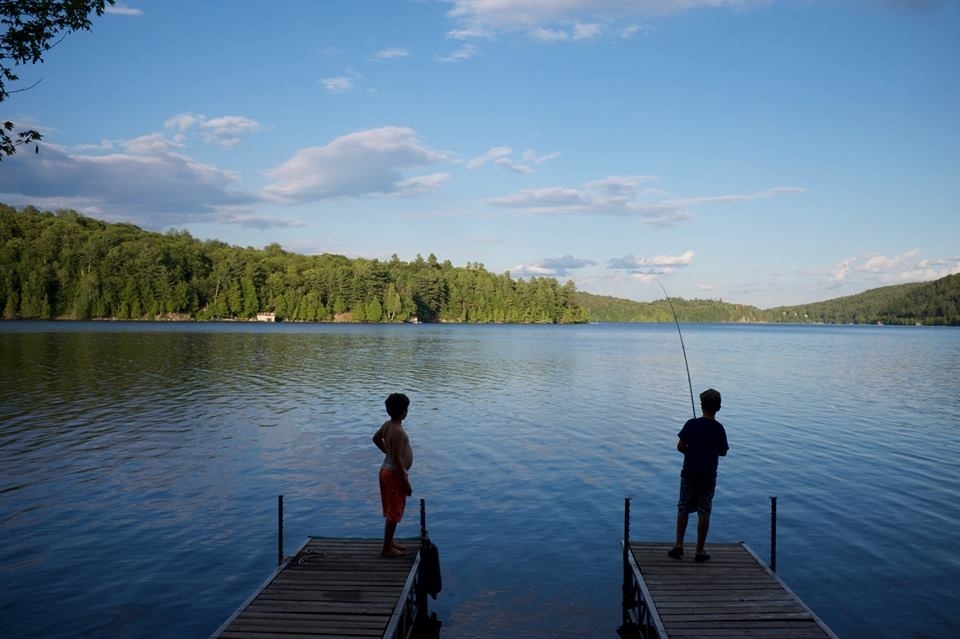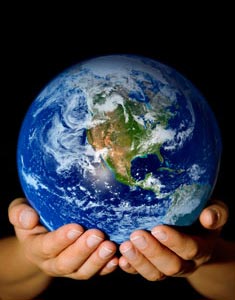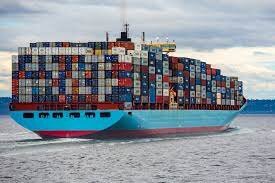
My writings - and those of others.
Better for some
I came across an update of the “If the World were 100 persons” the other day. It is still five years out of date but it was interesting to compare with figures for an earlier period. Here is what they show:
2016 (For comparison purposes similar figures for 1999 in brackets)
If the World were 100 PEOPLE:
50 would be female (52)
50 would be male (48)
25 would be children
There would be 75 adults, 9 of whom would be 65 and older
There would be:
60 Asians (57)
16 Africans (8)
14 people from the Americas (14)
10 Europeans (21)
31 Christians (30)
23 Muslims
16 people who would not be aligned with a religion
15 Hindus
7 Buddhists
8 people who practice other religions (70 would be non-Christian)
12 would speak Chinese
6 would speak Spanish
5 would speak English
4 would speak Hindi
3 would speak Arabic
3 would speak Bengali
3 would speak Portuguese
2 would speak Russian
2 would speak Japanese
60 would speak other languages
86 would be able to read and write; 14 would not (70 would be unable to read in 1999)
7 would have a college degree (1 would have a college degree in 1999)
40 would have an Internet connection (1 would own a computer in 1999)
78 people would have a place to shelter them
from the wind and the rain, but 22 would not (80 would live in in substandard housing)
1 would be dying of starvation
11 would be undernourished (50 would be suffering from malnutrition)
22 would be overweight
91 would have access to safe drinking water
9 people would have no clean, safe water to drink
(6 people would possess 59% of the world’s wealth and all would be American in 1999)
But the important reminder is the map at the top of the page. Those of us who live in the wealthy countries are shielded from the realities of the rest of the world.
True Cost
When a cargo ship was stuck in the Suez Canal. we saw many pictures and got a sense of how big these vessels are. They are loaded with containers and we may not think who those containers are carrying and where they are going. Two US based not-for-profits decided to find out.
The study, prepared by Stand.earth and Pacific Environment found that most of the items were headed for 15 major retail companies. Here is an indication of the damage:
“Collectively, the top importers of U.S. goods are responsible for emitting as much sulfur oxide, nitrous oxide, and particulate matter as tens of millions of U.S. vehicles every year. These emissions are some of the most dangerous and deadly types of air pollutants, contributing to asthma, cancer, and premature death, and increasing the mortality risk from respiratory-based illnesses like COVID-19.”
Here are some of the names and the impacts:
“Walmart, for example, was responsible for 3.7 million metric tons of climate pollution from its shipping practices in 2019, more than an entire coal-fired power plant emits in a year. Target, IKEA, Amazon, and eleven other companies were also investigated.”
According to the study, there are 55,000 merchant ships on the water and the number is growing. All of them but one (noted elsewhere as the first electric merchant ship) use fossil fuels. It’s a reminder that our consumer life style does not take the full cost to the atmosphere into account. What is even worse is that the poorest among us are the ones most likely to live closest to the pollution along the shipping routes.
We often feel helpless. But we can tell them we know what is happening and challenge them to deal with it. We can buy elsewhere - and we can buy less.
Ignoring History
I am disturbed when I read the morning paper along with everyone else. Why are people not getting vaccinated, putting themselves at risk along with others? Why are governments now promising to do something about the fallout of residential schools, when the evidence has been in plain sight for so long? Why are some so unwilling to face the truth about the outcome of the US election?
While we fuss about these issues, the historian, Timothy Snyder has some cautionary reminders. In a recent New York Times Article he reminds us that a war on history is a war on democracy. Dealing with the suppression of agriculture in Ukraine in 1932, he notes the suppression of the story of the Ukrainian people themselves - as many as 3.9 million of them died of suffering and starvation. The official story was the triumph of industrialism. Real history was suppressed and rewritten.
Snyder goes on to review the current attempts to rewrite the history of slavery in the US. Suddenly in some states there are new laws of what teachers may or may not say. One of the dangerous elements relates to emotions. Teachers are not to relate parts of the story that some might find upsetting causing “discomfort, guilt, anguish or any other form of psychological distress on account of the individual’s race or sex.”
History, Snyder says, is not therapy. Becoming upset and dealing with it is part of growing up. It’s dangerous when becoming upset could call a halt to hearing the truth. Things become particularly upsetting when it affects groups - white Americans and African Americans, white Canadians and indigenous people or people of colour, respected leaders and things they said and did.
Snyder has strong words for denial. “When we claim that discrimination is only a result of personal prejudice, we liberate ourselves from responsibility.” he says. We have to face reality. Authoritarianism tries to shield us from that. By saying that we are not racist, we may think we have escaped. The only way to change the current situation is to face the past one honestly. That has to happen before anything changes.
Where are We?
As we now apparently are on the verge of space tourism as a future industry, there is more talk of space - why we want to enter it, how much will its cost increase the sense of difference between the billionaires and the rest of us, whether we have just found a new place to pollute. There are larger questions which few are asking or responding to.
Enter Mary Evelyn Tucker who responds to a different question at the Center for Humans and Nature. It poses some of the real questions for our time and invites others to respond.
Tucker starts by noting that evolution is new in the scheme of things - only 160 years old and not something we think about as a concept. We think of the universe as something stable and find it hard to imagine it as expanding. That’s a challenge. She notes that most of the findings of cosmology, biology and humans was not known to our grandparents or even our parents. I grew up thinking that the milky way was the limit. Modern science tells me that the universe is a developing 14 billion year journey and two trillion galaxies exist. But this story has been laced with facts rather than with a poetic sense of wonder.
Science and religion have split as studies, and many have abandoned both in a world using shopping and entertainment to find meaning. Tucker outlines how hard it was for the church to accept a change in the solar system, where humans were no longer the centre of the universe. While scriptural literalism is decried, its creation story is still the one that is fixed in our western worldview. What Tucker suggests is a need for a change of context. She details the experience of mediaeval scientists and their suppression and goes on to outline the experience of modern ones like Einstein, who notes his most serious mistake in not recognizing an expanding universe.
Where does this leave us? She proposes that we see ourselves as situated not just in the world, but in the universe and as part of its expanding diversity - with the gift of consciousness and ability to reflect, not as the pinnacle with the right to exploit it, but as part of its creation with potential. She ends:
“. . .we need an integrated cosmology where science and story are interwoven, where facts and values are braided. As Einstein said: “Science without religion is lame; religion without science is blind.”
The braid is a good metaphor as she reminds us that indigenous people have always understood the cosmos in an intimate way. Read this article - but also read Braiding Sweetgrass.
Changing Places
One of the people we need to learn from is recently retired Senator Murray Sinclair. He appeared a few months ago to speak to the law students at UWO but the address that I found stunning was this one he gave as recipient of the Tom Symons Medal lecture series at Confederation Centre in Prince Edward Island.
Unless you like lengthy introductions, you will want to skip forward to the lecture itself entitled, Confederation - We could have done better. Indeed he is right. We could have - and we must - all of us.
Sinclair knows the power of story and tells his own brilliantly. He notes that in legal training, one of the lessons is to lose your imagination and focus solely on facts. He then moves to facts with the audience. He invites them to take out their cell phones and find their favourite picture of a child. He stops the lecture and suggests that the audience share a story about that child with the person seated next to them - and the audience does so with great enthusiasm. He calls them back.
He then says “Delete that picture - after all it’s only a picture”. The room falls silent. He encourages them to do so even more - “Go ahead -You still have the real child after all”. He then asks to have a picture of his own samll granddaughter mounted on a large screen behind him. “I can’t either” - he admits. But Canada did that to our children.”
The point hits home. In this lecture and in so many others he outlines the damage of cultural genocide. In his book, coauthored with the other tribunal leaders, What We have Learned: Principles of the Truth and Reconciliation. he elaborates on the definition:
“Physical genocide is the mass killing of the members of a targeted group and biological genocide is the destruction of a group’s reproductive capacity. Cultural genocide is the destruction of those structures and practices that allow the group to continue as a group. States that engage in cultural genocide set out to destroy the political and social institutions of the targeted group. Land is seized. and populations are forcibly transferred and their movement in restricted. Languages are banned. Spiritual leaders are persecuted, spiritual practices are forbidden, and objects of spiritual value are confiscated or destroyed. And, most significantly to the issue at hand, families are disrupted to prevent the transmissions of cultural values and identity from one generation to the next.
In dealing with Aboriginal people, Canada did all these things”. The stories relating to the schools follow and they tell the stories of the actions of all the schools. There is no excuse. All the religious traditions are implicated in the words of the survivors.
Later in the lecture he made reference to his personal story - which relates well to the announcement yesterday that Cowessess First Nation within the province of Saskatchewan becomes the first to control its child welfare system under Bill C-92; it empowers indigenous communities to reclaim jurisdiction. 83% of children in the province were from first nations as of last fall. The Eagle Woman tribunal there will help settle disputes,
Senator Sinclair’s father was a residential school survivor who suffered trauma from the experience which was increased when his wife died leaving him with four young children. He transferred the responsibility for them - including one year old Murray - to his parents in their sixties. “My grandmother connected every one of us with an auntie, with whom I went everywhere and learned from her. On the basis of long term results my grandmother proved to be an excellent child-welfare administrator.”
He also talked about his own lack of fellunderstanding of indigenous spirituality and the role it must play in his life, until he was counselled by an elder. That part of the video above is also moving and revealing. He told us of the importance of a name - and how his in his own language has prophetically given him direction as to how to live his life. His granddaughter has her own name story and we understand how fearless and true to that spirituality that is forming her. When asked to describe her grandfather’s occupation by a nine year old classmate when he visited her school - Senator Murray was not sure she actually knew - but she still had an answer - “He Sentaizes”
Thank the universe for Senator Sinclair - and even in retirement we hope he continues to Sentatize.






